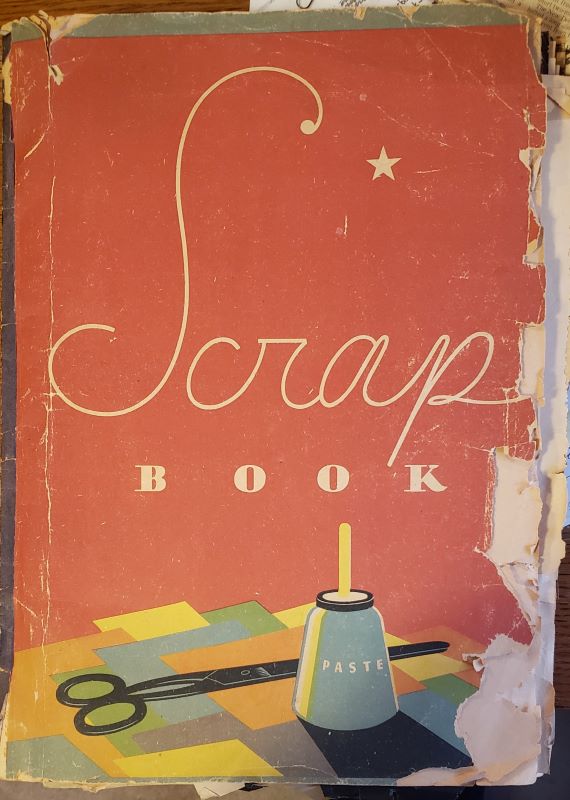
No matter what you call these books, they’re full of surprises.
History research, The Crown, and artist posts are three reasons that junk journals and smash and scrap books are on my mind. What are these books, and why are they important?
Today, scrap-bookers create elaborate and beautiful books full of interesting artist papers displaying photos set off in decorative frames, embellishments, ribbons, washi tape, stamping, stencils – the list goes on. The result is a cherished keepsake. If you are crafty, this is a great way to commemorate a special trip, the grandchildren, or a family history.
But when I was a kid, a scrap book was a large cheap newsprint-filled book that you filled with “stuff you wanted to keep”, stuck in with mucilage (remember the little brown bottles with the red rubber tips?) or clear “scotch tape” (cello-tape) that eventually ended up not clear at all but yellowed and dry. “Archival” or “acid free” were unknown terms.
Sometimes your scrap book would have a theme. I have one crammed with school memorabilia, and another filled with a series of articles on Canada’s capital cities that ran in the Star Weekly magazine in the 1960s. When things got “serious” and I was writing poems that I KNEW had to be saved for future generations and the good of mankind, I was able to find a hard-covered scrap book. It’s tied with a shoe lace.
Smash Books?
Time goes by and my good friend Janette MacDuff, a talented glass-and-mosaic artist, has been posting on Facebook wonderful little hand drawn pages with notes on characters and stories from the village of Fox Island in Guysborough County, NS. She would say, “Another page for my smash book.” I loved the pages, but what the heck was she talking about? Then I started to see artists posting about junk journals.
Jennibellie to the rescue. A Google search took me to her Youtube video comparing them all. I was WAY behind the curve – Her video is dated 2012!! Turns out that a smash book is really what we used to call a scrap book – you can smash anything into it that you want, bits and pieces that you can’t bear to throw away, collections of things (Match book covers? Famous quotes?) that you want to keep, illustrated notes on family stories you remember like Janette’s. You can do this without getting into those gorgeous but lengthy projects like today’s craft-savvy scrapbookers. In her video, Jennibellie even shows “historical examples” of old scrap books – like mine!
Junk Journals?
This week I signed up for the wonderful Sketchbook Revival art workshop series hosted by Karen Abend, and right out of the gate Karen was showing us how to make a Junk Journal. This is a book that is actually MADE of “junk” – you bind together pages made from greeting cards, old maps, napkins, magazine pages, brochures and other “rubbish” (as Jennibellie says) and then you can use those pages to paint or doodle or journal upon.
(While we are giving definitions, an Art Journal is a different beast altogether. It contains watercolour or mixed media paper suitable for trying out techniques, exploring ideas, sketching and/or daily journaling that includes art… ). Of course there will be differing opinions as to which kind of book is what, but these definitions work for me.
Genealogy and History Treasures
So why bother with all of this? Let me tell you what happened this week. We were catching up on episodes of The Crown when I remembered my Royal Family scrap book that I started in the 1960s (photo above). I think most Canadian kids of that era did this! Articles, clippings and pictures dutifully (and lovingly) pasted. I went to The Scrap Book Shelf in my office (don’t ask) and pulled it out. Surprise! Along with mine, out came a much older scrapbook I had forgotten. It was my Aunt Marion’s, pictured at the top of this post. When I opened it, THIS was on the front page followed by other pages equally awesome – Her version of the Royal Family a generation earlier!
Talk about background for fleshing out the Netflix series! And a chance to admire how accurately The Crown producers have been portraying the appearance and mannerisms of each character. Now I must find a repository that’s interested in adding Aunt Marion’s scrap book to their collection. (And maybe mine too! After all, it is an “historical example”!)
Also this week, a reader of this website has written to me about my history of White Head Harbour, lamenting that no-one has done the same for his mother’s home community of Port Hilford, N.S. I did a quick online search, and he’s right – no history book. HOWEVER, I did discover something else. The Women’s Institute (which is famous among historians and genealogists for having kept SCRAP BOOKS on the history of each branch’s area) apparently has material on Port Hilford that can be seen at St. Mary’s Genealogy Research Centre at Sherbrooke Village in Guysborough County NS. Never underestimate the power of a scrap book – or a smash book. Whatever you choose to call it.
My grandmother’s scrap books (plural) are on my shelf too. (I said, “don’t ask”!) In it are needlework patterns, favorite recipes, little poems that caught her fancy, clippings that interested her, housekeeping tips from her era of woodstove cooking. There’s also a handwritten page in there listing all the White Head boats and crewmen who were caught at sea in the terrible Blizzard of 1910. There are clippings of weddings, local happenings, obituaries, news on family members who lived far away. When I indexed all the surnames in one of her scrapbooks from the 1930s, it ran to 7 pages typed in double columns! Often archives and museums have scrap books in their collection that are well worth a look. These have helped me considerably in my own research. You’ll find them catalogued by community name.
One final thought:
If you can’t find a history of your town or your parents’ towns, then write down what YOU know. As you think of some tidbit that you were told or remember or know, scribble it down, or type it into your computer, or record it somehow, and keep adding to it as you think of more stuff. YOU are the history of your family and their communities, especially if no one else has done it. Write down the names of any of your mom’s relatives that you know, and who they were, and then write down anything you remember about your dad’s people – and about your grandparents and great grandparents, for that matter. Did they run a store? Did they own a vessel? Are there stories about what they did for fun? Did they play the fiddle? Did they march in an annual parade? What church or organization did they belong to? Write it down, ask around to see what other people might know – and then stuff it into your Smash Book for safe keeping, just like Janette.

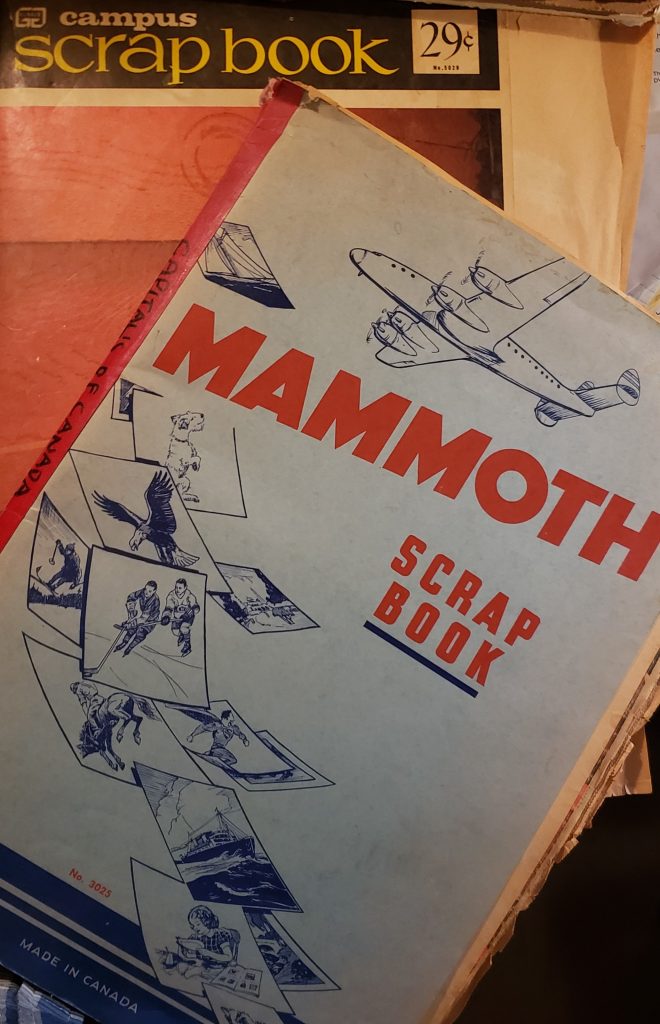
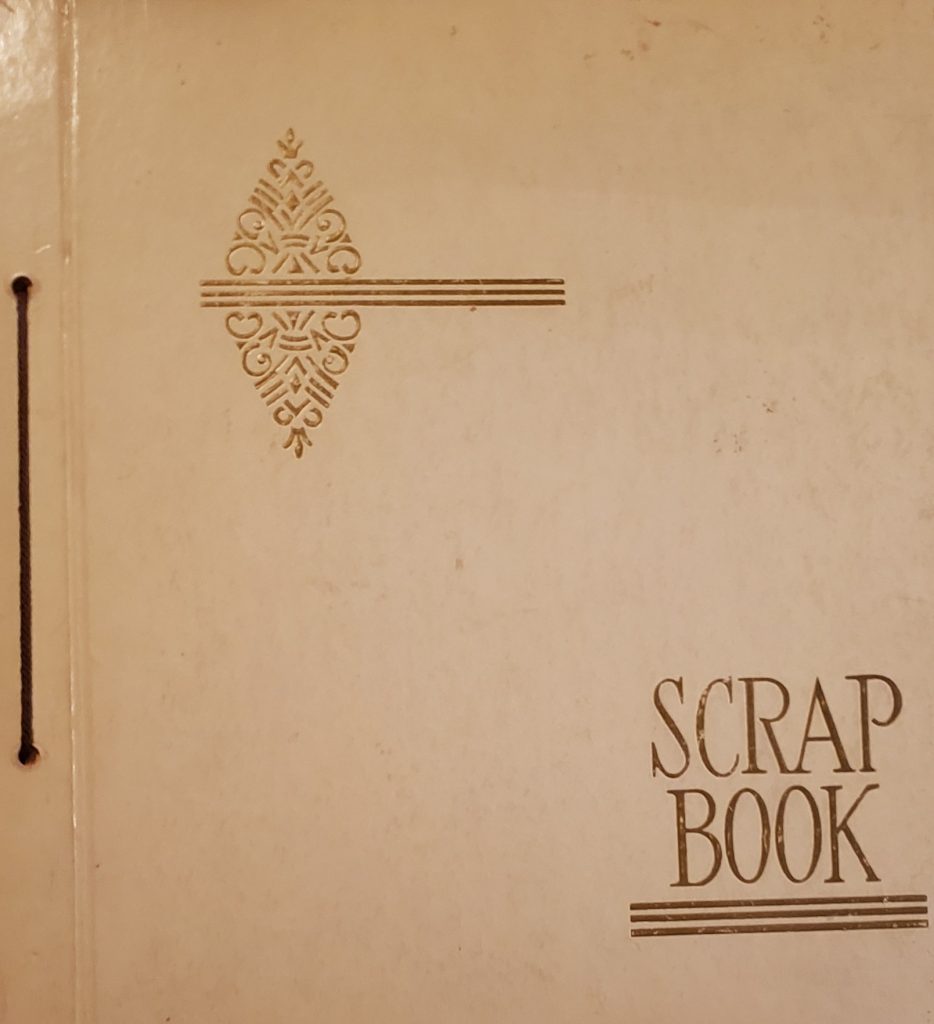
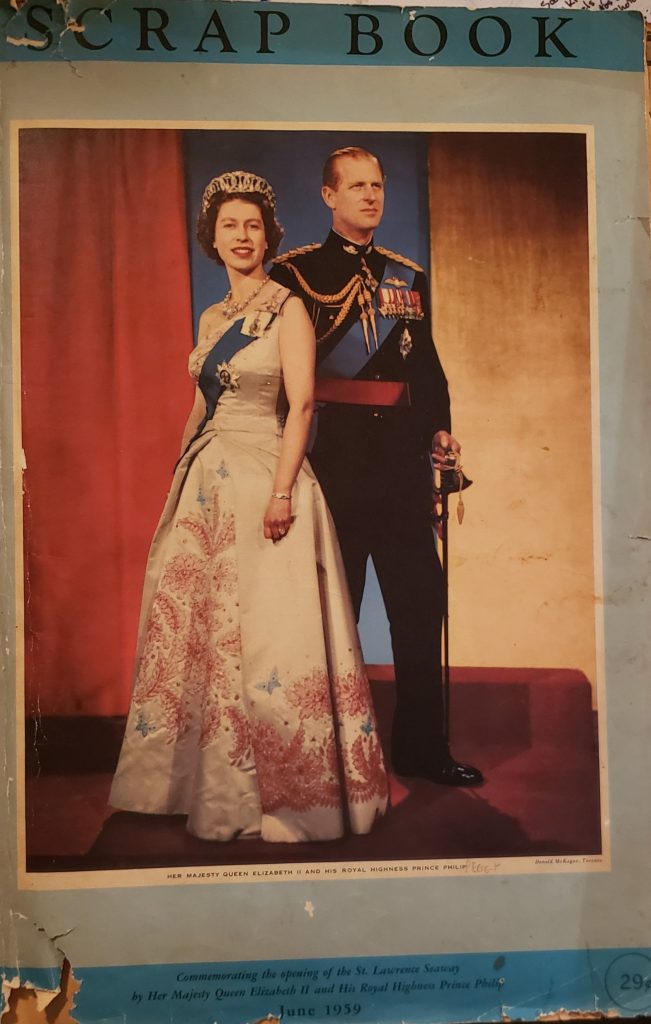
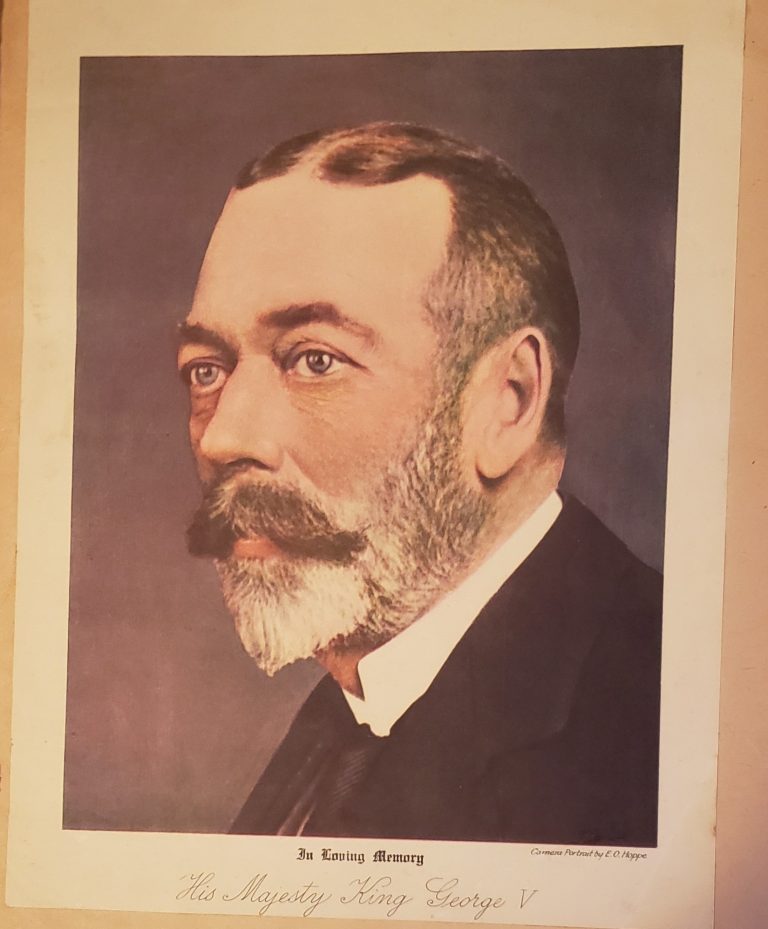
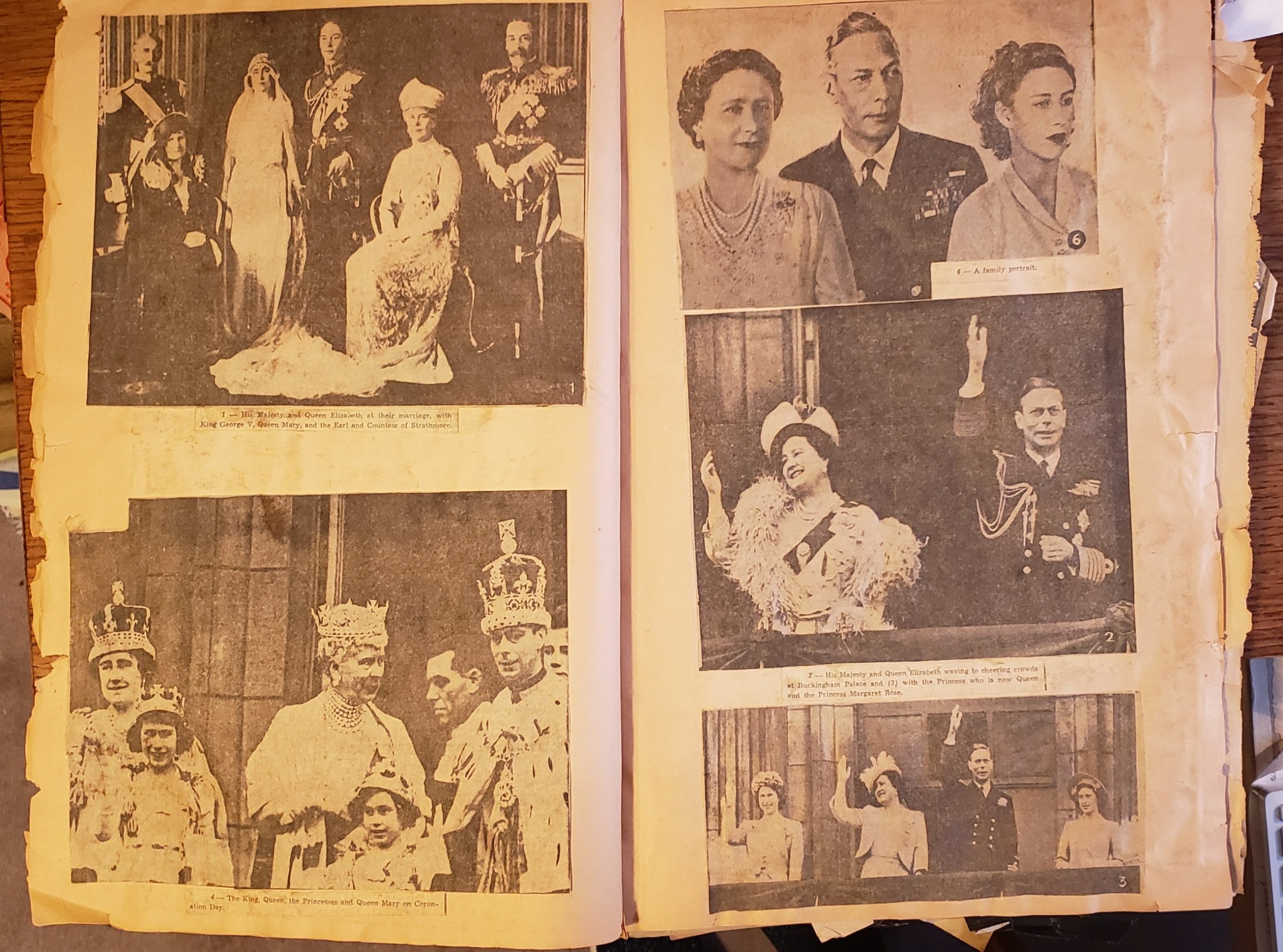
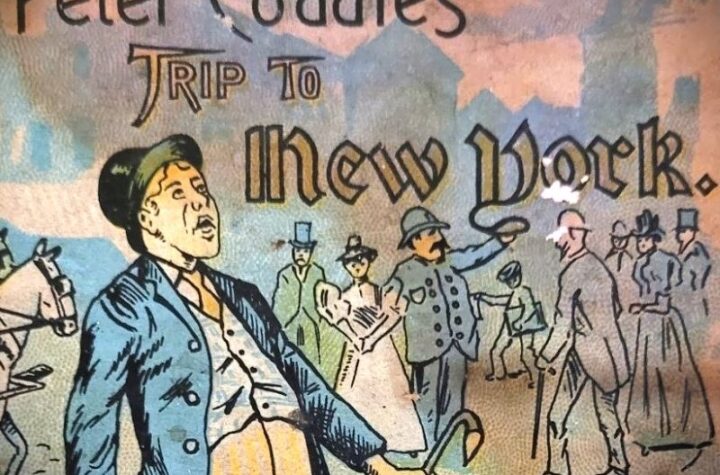
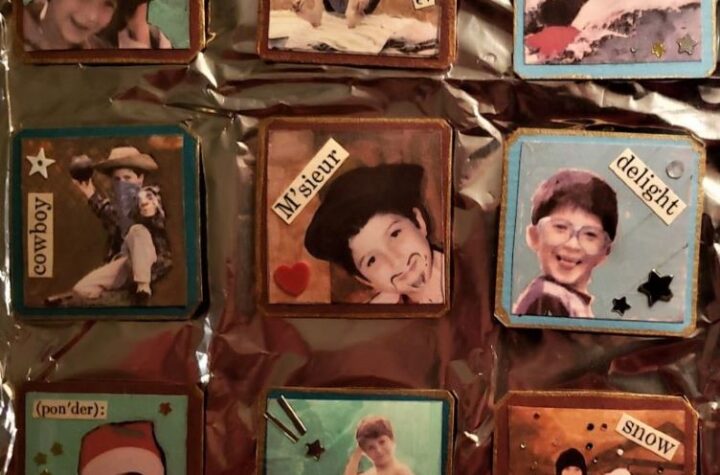
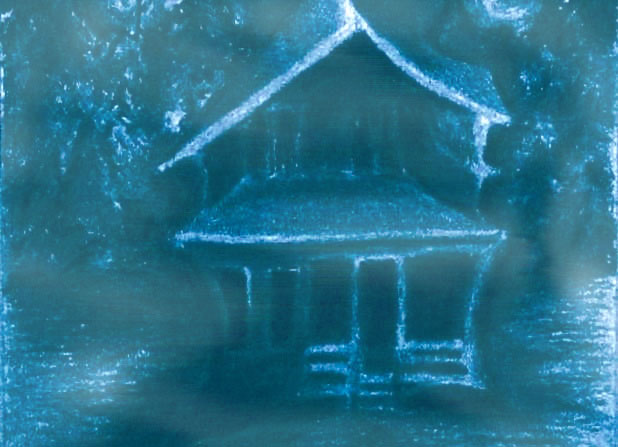
I still have a scrapbook that Aunt Ruth Ward made for our four kids when they were quite young – cards, poems from newspapers, pictures that caught her eye, etc. The best part were the poems by our Grandma Ada (I didn’t know her and don’t know what she’d have been called and I guess I was the only grandchild when she died) and by Aunt Ruth herself. It’s still here but is rather shabby as it was well used and enjoyed by all.
That’s wonderful! My mother had a little folder (which I still have) that has a collection of Grandma Ada’s poems tucked inside and some of Aunt Ruthie’s too. I am sorry not to have known our Grandmother. Aunt Emma said she was the reason they all “tended to have a sunny disposition”.
Janette MacDuff (mentioned in this post) tells me that she has her family’s Royal Family scrap book from the 1950s. Like my “important” scrap book, this one has hard covers and is tied with a shoelace!